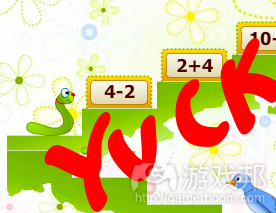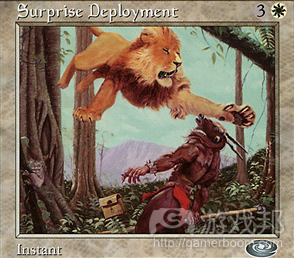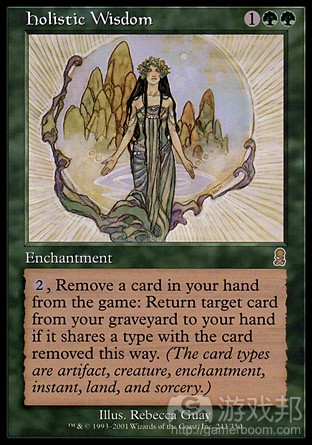论述针对教育领域的10条游戏设计原则
作者:John Golden
本文主要分享游戏设计的10原则,特别针对想要推出游戏作品的教师,主要瞄准教育游戏。
1. 目标
通常这对教育游戏来说轻而易举。
教师习惯于设定目标,但并非那种能够在游戏中产生较大影响的目标。若除内容目标外,教师还设有过程目标,这就能够在游戏中发挥巨大作用。对数学运算来说,好消息是,任何游戏只要融入策略元素就会让人觉得其同问题解决过程挂钩。
2. 规则
规则需要能够被理解,但对玩家来说其要有一定的难度。我觉得有些教育游戏在此存在问题,主要源自于优秀教师会替学生简化内容的传统观念。但这迎合了“少提供帮助”教学模式复兴的趋势。
3. 交互作用
游戏需要促使玩家的操作能够互相产生影响。这是《Jeopardy》、《Bingo》及《Baseball》之类游戏的主要失败之处(游戏邦注:在这些游戏中,竞争是唯一的互动元素)。这是我和Nick Smith的新作《Card Catch》当中的核心要素。玩家互相给彼此设定目标,游戏持久的时间越长,你和对手纸牌进行的互动就越多,这融入二级水平的策略和数学元素。
4. 角逐
若落后玩家完全丧失机会,那么这会促使他们放弃游戏。我最近发现这对我来说有多么重要。因为作为游戏爱好者,这是我讨论的内容之一。想想《大富翁》的缓慢消磨过程。在游戏中,玩家需要能够进行角逐。这不一定要包含胜出机会——在《弹子棋》中,你就完全没有领先的机会。但你依然能够在棋盘周围移动。这需要具有可能性,能够帮你创造出史诗般的胜利故事。
在教育游戏中,这包含双重风险,因为很多教育游戏会奖励掌握知识的玩家。若数学游戏是围绕谁的速度更快,那么有些刚体验游戏的学生就知道自己没有希望。有时这是个包含更多偶然性的简单困境,但这通常需要进行结构设计。我觉得这一原则也说明为什么很多游戏都被用在课堂上进行检验,而非用于辅助学习。
5. 惯性
促使玩家想要更多。在成果不错时离开。Dave Coffey非常擅长这点,总是留给学生思考空间。我通过学生在课堂结束时是发出“哎呀”,还是“哦哦哦”进行衡量。在我看来,这和第2点规则存在密切联系。太难,还是太简单会在此显露无疑。
Mark将此同写作建议联系起来:尽量保持简短,然后去除10%的内容。
这对教师来说也非常棘手,因为我们被灌输的观念是,直到所有学生都完成才离开。与其让学生没有机会完成,还不如让他们坐着什么都不做。这对游戏来说比登天还难。
6. 惊喜
游戏应该向玩家呈现不可预知性。
在我看来,这和互动及竞争元素存在密切联系。获得惊喜的一个方式是隐藏信息——这通常会促进玩家之间的互动。信息可以不为所有玩家所知,或者玩家进行相互隐藏。新游戏《Flip Out》就包含巧妙的惊喜元素,其中各玩家会看到双面牌的不同面。这给数学和读写能力带来的一个益处是,这促使推理变成游戏的一个组成要素。
另一融入惊喜元素的简单方式是随机事件——这促使角逐元素具有可行性。促使《大富翁》具有可玩性的唯一元素是掷骰子。在《尤克牌戏》中,无论你多么杰出,你都需要纸牌。这包含的数学运算益处是,融入概率元素,虽然玩法因此具有随意性。因此游戏最常见的两个组件是骰子和纸牌也就不足为奇。
7. 策略
在我看来,有趣的是,这在列表中处于如此低的位置。
这是教育游戏相比其他活动包含的最大附加元素。策略游戏固有的解决问题内容对数学运算来说非常有益。由于此密切联系,数学运算通常将数学看作游戏。我们如何通过许可范围的移动操作实现目标?向K-12的学生呈现游戏,询问其策略通常能够巧妙总结及挖掘游戏中的多数数学元素。这还能够促进惯性元素的生成,因为玩家会更想要进行重新体验,尝试其他策略或想出对抗这些策略的办法。
惊喜和策略元素之间存在自然冲突。若内容过于随机,策略就会丧失影响力。若事件完全没有随机性,那么这就是国际象棋或围棋。二者都是非常优秀的游戏,都是旨在向玩家呈现竞争和惯性元素的游戏作品。这里谈谈《Magic》:两个元素的完美平衡是这款游戏如此富有吸引力的主要原因所在。从更小层面来说,这同样也适用于桥牌游戏。
8. 趣味性
我对于此非常挣扎。我认为互动、惊喜及策略元素非常吸引人,因此总体而言我算是很喜欢玩游戏。我喜欢玩各式各样的游戏。但对于孩子来说,游戏的趣味性主要在于惊喜方面。所以我经常让孩子们在游戏中添加语境元素。我将此归类成Decimals游戏。诸如《Decimal Point Pickle》和《Power Up》之类的游戏无疑包含这一元素。这大概就是优秀作品和轰动巨作之间的差异。
从某种程度上来说,我觉得后面两个要素算是趣味性的子范畴。
9. 特色
10. 引诱元素
特色主要围绕游戏的语境和设置,在我看来,这会给趣味性元素带来巨大影响。至少是在进入游戏方面,Mark将此同游戏障碍或登陆成本联系起来。其他原则决定长远趣味性。就我们而言,这是促使我们首次体验游戏的元素,但其无法维持我们的兴趣。关于特色方面,Mark认为它会影响设计。我童年学习《圣经》是通过基于10个伴娘寓言的Lord纸牌游戏。但游戏情景是激发有启示能力(游戏邦注:这无疑会增加游戏的趣味性)的四骑士。
建设性特色的理念让我想起同事曾谈到综合单元。所谓的海洋生物学整合单元并不是将数学运算问题放在鲸鱼主题的表单中,而是你关于鲸鱼的问题需要通过数学运算进行思考和解决。杰出特色不是个附加元素,而是会支持游戏机制。就数学游戏而言,这促使游戏结构支撑数学目标。初级特色是抽认卡/训练数学游戏的特点。“你进行众多乘法运算,但这是基于棒球场背景。”
引诱元素促使用户尝试你的游戏。这在教育游戏中显得不那么重要,因为我们有固定的用户(学生),而且我不打算将自己的游戏卖给发行商(所以也许我游戏的引诱之处在于采用免费模式)。但这令我想起Dan Meyer曾谈到课堂的引诱元素,认为这和学生的投入性存在密切联系。只是我不知道要如何从特色和趣味中提取这一元素。也许引诱元素是用来衡量游戏是否存在令你感到惊讶的元素?(本文为游戏邦/gamerboom.com编译,拒绝任何不保留版权的转载,如需转载请联系:游戏邦)
Ten Rules for Game Design
by John Golden
OK, well, the first five. Mark Rosewater, the man behind Magic, is writing a 2 part article on game design principles. Worth a look. Especially for teachers who want to get their game on. I’ll share his categories, with notes on educational games.
1) Goal(s).
Usually easy for educational games.
But wait… maybe not. Teachers are used to setting objectives, but the kind of objective makes a big difference in the game. If in addition to content objectives, the teacher has process objectives, it can make a big difference in the game. The good news for mathies is that any game with strategy feels like it’s connecting to the problem solving process.
2) Rules.
Rules need to be understandable, but make things hard enough for the player. I think some ed games have trouble here, because of the old saw about about good teachers make things easy for their students. Goes well, however, with the resurgence of the ‘be less helpful’ mode of teaching. (We can’t call it new if Dewey was onto it.)
3) Interaction.
The game has to help what players do matter to each other. This is a major failing of Jeopardy and Bingo and Baseball, etc. where competition is the only interaction. Probably this is the best aspect of my most recent game Card Catch, with Nick Smith. Players set the goal for each other, and the longer the game goes on, the more information you have about your opponents’ cards, which adds a whole second level of strategy and math.
4) Catch-Up.
If a player who falls behind has no chance, it disengages them. I just recently noticed how much this matters to me. I think because as a game lover, this is one of the few things I loathe about them. Think about the slow grinding Monopoly death… (shudder) Within the game, players need to be able to catch up. It doesn’t have to be likely – then it’s Candy Land, where you can’t keep a lead. You might as well be teleporting around that board. It does have to be possible, which will help create stories of the epic win.
In educational games this is a double danger, since so many ed games reward players who’ve already learned the material. If a math game is about who’s fastest, there are students who start the game knowing there’s no hope. Sometimes this is an easy fix by adding a bit of chance, but usually it requires structural design. I think this principle is why so many games get pushed to review in the classroom, instead of being used to help learn.
5) Inertia.
Leave them wanting more. Get out while the getting’s good. Dave Coffey is excellent at this with his lessons, always leaving students something to think about on the way home. I measure this by whether students are ‘whew’ or ‘ohhhhh’ when our time is up. In my experience this connects heavily with (2), Rules. Too easy or too hard shows up here.
Mark connects it with writing advice: make it as short as you can, then cut 10%.
Also tough for teachers, because we’re trained to go until everyone finishes. Much better to have people sitting around doing nothing (quietly, of course) than to have anyone not have a chance to finish. That’s murder to a game.
6. Surprise. The game should have some unpredictability for players.
To me, this connects strongly to Interaction and Catch-Up. One way to get surprise is hidden information – which often can contribute to interaction amongst players. Information can be hidden from both or the players can hide it from each other. The new game Flip Out has a good element of this with two sided cards of which each player sees different sides. A benefit for math and literacy is that this makes inference a part of the game.
The other easy way to add surprise is random events – which can contribute to making catch up possible. The only thing that makes Monopoly playable is the dice rolling. In Euchre, no matter how good you are, you need cards to play. The math benefit is the addition of probability, even if informal, to game play. It’s no surprise that the two most common game pieces are dice and cards.
7. Strategy.
Interesting to me that this is so low on the list, which makes me wonder what he was ordering them to achieve.
This is the biggest add-on for educational games over other activities. The problem solving inherent in any game with strategy is such fantastic grist for mathematics. Mathematicians often see math as a game because of this strong connection. How do we achieve a result with allowable moves? Using games with K-12 students,asking for their strategies always makes for an amazing summary and unearths most of the math content of the games. It also helps build Inertia as then students are more interested in playing again, trying our others’ strategies or designing ways to beat them.
There’s a natural tension between Surprise and Strategy. If things are too random, strategy loses all impact. If things aren’t random at all, it is chess or go. Both great games, obviously, but also both games that struggle with Catch-Up and Inertia for many players. Plug for Magic: the balance of these two elements is a large part of what makes the game so bloody amazing. Also applies to Bridge, to a lesser extent. (Yes, I’m claiming Magic > Bridge.)
8. Fun.
I struggle with this. Because I find interaction, surprise and strategy so engaging, I love games in general. I’ll play anything. But what makes a game fun to kids is often a surprise to me. It’s not uncommon for me to take a game to kids, and let them add the context. I wrote about this a bit with my Division into Decimals game. Games like Decimal Point Pickle and Power Up had this in spades. Probably this is the difference between a game being good, and the game being a smash hit.
To some extent I think the last two principles are really subcategories of this one. Did they get pulled out to make ten or – more likely – is there something I’m missing that makes them truly distinct?
9. Flavor.
10. Hook.
Flavor is about the context and setting for your game, which heavily influences the fun aspect for players, in my experience. At least on entry, and Mark connects this to the barrier or entry cost to your game. The other principles determine long term fun. In our house, this gets us to play a game fr the first time, but won’t sustain interest. One neat point he makes about flavor, though, is how it can influence design. My youth Bible study is making a return of the Lord card game based on the 10 bridesmaids parable. (Yes, really.) But the context for the game is inspiring a four horseman of the apocalypse feature that will definitely add interest to the game. Probably shouldn’t have shared this story.
The idea of constructive flavor reminds me of my colleague Jacqui Melinn talking about integrated units. A marine biology integrated unit is not when you put your math practice problems on a whale-themed sheet, it’s when your questions about whales require math to think about and solve. Good flavor isn’t an add on, but supports the game mechanics. For a math game, this gets at the structure of the game supporting the mathematical objective. Cheap flavor is the hallmark of flashcard/drill math games. “Look you’re doing lots of multiplication, but it’s on a baseball diamond!”
Hook is what gets people to try your game. This is less important in educational games to me as we have a built-in market (students), but I’m also not trying to sell my games to a publisher. (So maybe my hook is that my games are free?) However it does remind me of Dan Meyer talking about a hook for a lesson, and could well be linked to engagement. I just don’t know how to tease it out from flavor and fun. Maybe hook is a measure of whether the game has things that make you wonder?(Source:mathhombre part 1,part 2)















































